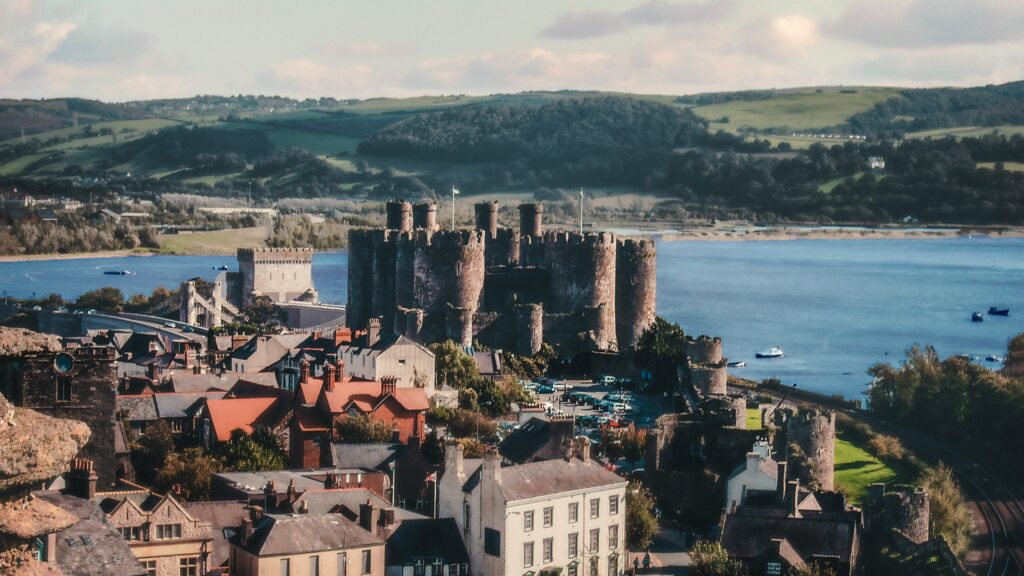Colin Miles suggests tourist attractions would help themselves by installing their own weather stations
Last week’s news that a Devon tourist attraction is threatening to sue the Met Office over its ‘unduly pessimistic forecasts’ will not come as a surprise to anyone in the industry. There have been mutterings for some time now that ‘unreliable’ forecasting of bad weather is causing a loss of business for the tourist trade. How relevant is this to the Welsh tourism industry?
Well, we do start off with a big disadvantage in that Wales is certainly perceived as being wet. The cry of ‘What does one do on a wet Sunday in Wales?’ may stem from when the country was ‘dry’, but the overall impression remains. And Wales is indeed much wetter than many areas of the UK, though the wettest place is actually in the Lake District where a record 257 inches of rain were recorded in 1954. Basically the mountains attract the rain as the clouds seek to rise above them. But these very mountains are also where we and places like the Lake District have some of the most beautiful, tourist-attracting scenery.
But how valid are the weather forecast complaints? As someone who has his own weather station, and has kept weather records on and off for the past 50 odd years I keep a close eye on the forecasts, and I have to agree with the complaints. Without quoting any figures – more on that later – I had a weeks’ visit from my daughter and younger grandson this summer, so we were searching for attractions, bearing in mind the weather forecasts. And to be perfectly honest, if we had taken any notice we would never have gone anywhere, which would have been most unfortunate as we encountered very little rain on any of the days.
This is not an isolated episode though the wetness of this summer accentuated the problem. The Met Office are proud to trumpet their accuracy and to say that the 5 day forecasts nowadays are as accurate as the 2 days ones from 30 years ago. And if you go on their web site and look at their figures you will see a straight line showing year on year improvements – with no deviation. But if you look at little more closely at those figures, it does smell a bit of PR. Take temperature, which is probably the easiest to check. A forecast accuracy of around 88 per cent for the maximum and minimum temperatures might sound impressive until you realise that the margin of error is to within 2C.
When you also realise that the mean UK range of temperature is between around 5C in the winter months to 9C in the height of summer, it starts to look rather less impressive. And if you simply use the average past values against the actual values, as I have done, it is even less impressive as you can probably get more than 70 per cent accuracy that way.
As for how accurate the forecasts are for more than two days ahead well, all I can say is that, unless the weather is in a dry, settled period with a nice, big, fat anti-cyclone sitting squarely over the UK, they are pretty useless if you try to plan ahead for any outdoor weather-dependent activity.
A big problem nowadays seems to be the computer models. Because these are now so powerful they can be updated every few hours, or less. The end result is that any small change that they detect can result in constant changes in the forecast – which is very confusing. And with the changeable weather that we get this can mean that, for instance, the southwest of England gets the rain instead of south Wales, or vice versa – and the morning and afternoon forecasts change accordingly. I greatly sympathise with the forecasters as it only takes a very small change in wind direction to make a big difference in where the rain falls. But the constant updates are not only confusing but don’t inspire much confidence.
In the UK we live in a very changeable climate, so forecasting is always going to be very difficult. Micro-climates abound. Indeed, you could say that every mountain and valley has their own climate and, if you look at the complaints, this is at the heart of the problem. It is said that more people watch the weather forecast on the television than any other item of comparable length, but that very few can actually remember what was said.
This is hardly surprising given the area covered and the small allocated time period. And however pretty those rain clouds might or might not look, they cannot be any more than very large generalisations. But do we really need to be distracted by seeing the weather person? We haven’t got the topless Italian models yet, but some of the ladies can be very distracting. If you were of a cynical frame of mind you might suspect that that was the whole idea, otherwise we might actually look at and remember the forecast.
However you look at it the forecasters are in an impossible situation due to the enormous areas they have to cover and the limited amount of time available. But there is one area where, thanks to modern technology and changing patterns of behaviour, the tourism industry could help itself. The ever-increasing tendency nowadays is for decisions to be made at the last moment. During the summer visit mentioned above I would look at the forecast the day before, but it wouldn’t be until the actual morning that any decision would be made as to where to go.
Most tourist attractions have web sites, but they don’t have weather stations. I put one into the National Botanic Garden of Wales a couple of years ago and it is linked into a computer forecasting system, which purports to give a five day forecast. But it is the immediate weather report, what it is actually like at the Garden, that is potentially more important. If more tourists attractions took the trouble to install these weather stations – the cost isn’t great – then visitors would be better informed as to the actual weather for those sites rather than the general forecast for an area. It is obviously not a perfect solution, but it could be a small improvement in what is a very difficult and potentially costly area for the tourism industry.






Colin has identified a very real problem, but I would add a small caveat and that is that the local forcasts say on Wales Today do sometimes differ from the National Forcast in that they often seem to give some attention to regional micro-climate affects and I would say they are somehat more accurate.
Saying that the idea of having weather stations and webcams (so you can see the weather) would be a welcome addition if done en-mass and publicised. Alternatively perhaps we have could use the second S4C digital channel (recently abandoned) to show a rolling montage of webcams and weather data from arround Wales so over your breakfast you can decide whether to travel and where to travel. No presenters, a gently soothing tune and changing inspiring views. The Austrian second channel could be a blueprint as they show the mountain top ski and lift resorts.
Jeremy – you say the idea of having weather stations and webcams would be a welcome addition if done en-mass and publicised. Yes – indeed, and something that a body like Visit Wales could instigate. I believe that they currently have grants available for digital tourism. But this is something that would really need to be done centrally rather than having every tourist attraction bid for themselves.
We run a small B&B on the Llyn Peninsula i.e. West of the Snowdonia range of mountains and thus avoid much of the rainfall of that area.
I regularly tell our visitors to check out the local weather forecast on-line at the Met Office’s own website and of course the accuracy is much higher than any general forecast broadcast at the end of News Bulletins etc.
I agree that all of Wales has been tarred with an unfair reputation for general wetness and that is due largely to the popularity of Snowdonia and our other mountainous areas, but the Welsh Tourist Board/Visit Wales have a huge opportunity to make local forecasting a priority for potential visitors to any part of Wales.
I have written to the Met Office before but I think that they are like all forecasters cautious and get damned if they do not forecast bad weather and damned if they do and that all followed the famous surprise mini storm/hurricane that hit SE England in the 1980s.
We need to educate visitors/people to move away from general forecasts to on-line local forecasts; no need for our own weather stations the Met Office already has all the detail; we just need to learn to use it properly.
See our local forecast here
http://www.metoffice.gov.uk/weather/uk/wl/abersoch_forecast_weather.html
and if you feel like a break come and see us!